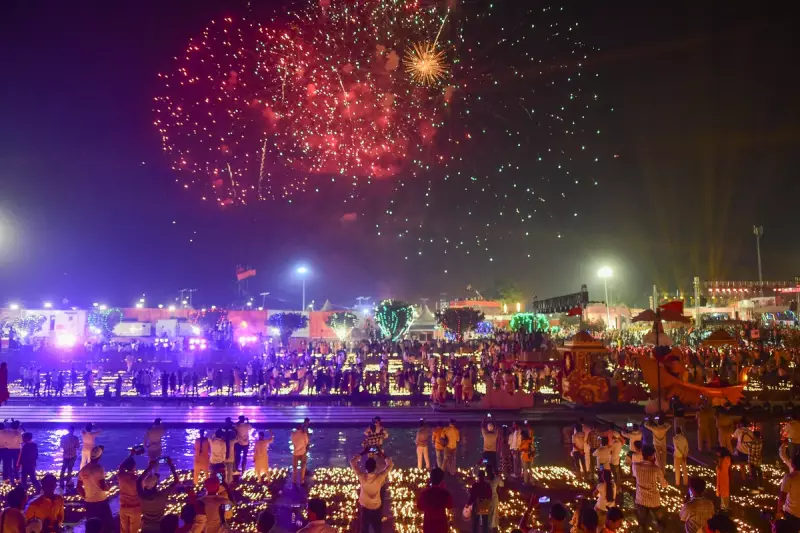
The ancient city of Ayodhya witnessed an extraordinary spectacle during Diwali celebrations, illuminating the night with a staggering 2.2 million earthen lamps that secured a Guinness World Record. The breathtaking display around the newly constructed Ram temple created a golden halo visible across the city, drawing millions of devotees and tourists alike.
Festival of Lights Meets Environmental Frights
While Ayodhya basked in ceremonial glory, the capital city Delhi faced a starkly different reality. The festival period coincided with a severe deterioration in air quality, pushing pollution levels to dangerous heights that threatened public health.
Meteorological conditions conspired with festival fireworks and traditional practices to create a toxic cocktail in the atmosphere. The Air Quality Index (AQI) soared into the 'severe' category, prompting authorities to implement emergency measures including school closures and construction bans.
Record-Breaking Devotion in Uttar Pradesh
The Ayodhya illumination wasn't merely a religious observance but a meticulously planned event involving thousands of volunteers who worked tirelessly to position the lamps along the Sarayu river. The previous record of 1.5 million lamps, set in 2020, was comprehensively surpassed in this display of devotional fervour.
Local officials reported that the celebration attracted unprecedented crowds, with infrastructure strained to accommodate the influx of pilgrims wanting to witness both the record attempt and the newly inaugurated temple complex.
Health Emergency Unfolds in Capital
Meanwhile, Delhi's residents faced what medical professionals described as a public health emergency. Hospitals reported increased admissions for respiratory issues, particularly among children, the elderly, and those with pre-existing conditions.
Doctors advised residents to limit outdoor exposure and recommended high-quality masks for essential travel. The situation highlighted the ongoing challenge of balancing cultural traditions with environmental concerns in modern India.
The Political and Cultural Significance
This Diwali carried particular importance as it marked the first celebration following the January inauguration of the Ram temple, a project that has profound religious and political implications across the country. The scale of celebrations in Ayodhya reflects the city's growing status as a Hindu pilgrimage centre.
Simultaneously, the pollution crisis in Delhi has reignited debates about sustainable celebration practices and the need for regional cooperation on environmental issues, particularly regarding agricultural burning that typically intensifies during this period.
As the lamps in Ayodhya were extinguished, the conversation about finding equilibrium between cultural preservation and environmental protection continues to burn brightly across the nation.





